
John Thompson’s engraving of William Holman Hunt’s illustration of Tennyson’s The Lady of Shalott 1857. Hunt made several preliminary sketches (dating from 1850) for this subject, which not only fascinated the public, but focussed much of the Pre Raphaelite consciousness on the early Mediaeval Arthurian romances – as late as the 1890s, Morris and Ruskin were celebrating The Nature of Gothic, Aubrey Beardsley was designing illustrations and other visual matter for Le Morte d’Arthur, and from the 1880s John William Waterhouse painted several versions of The Lady of Shalott – and of Ophelia (vis previous post).
Edward Moxon was the entrepreneurial publisher responsible for bringing the best, illustrated versions of Tennyson’s Idylls of the King to the public in the mid 19th century. His now famous ‘Moxon Tennyson‘ contained illustrations by Rossetti, Hunt, and Millais. It was Tennyson’s fascination with the Arthurian legends that inspired the Pre-Raphaelites to re-examine Malory’s Morte d’Arthur and the other iterations of these legends. Tennyson’s inspiration for the Lady of Shalott is said to have come from an Italian collection of Arthurian romances, but others included versions by Wolfram von Eschenbach, Gottfried von Strassburg, and other poets and mythographers.
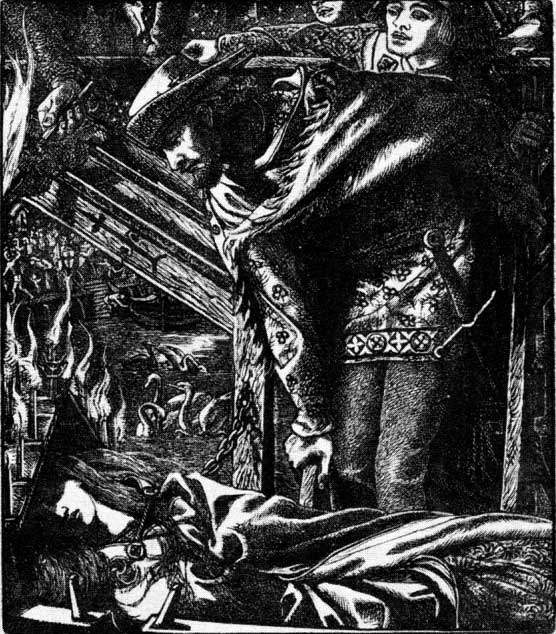
Dante Gabriel Rossetti: The Lady of Shalott 1857. The engraver here retains the feel of a wood-cut (rather than the finer wood-engraving, or even finer copper-plate engraving), and this serves Rossetti well – it has a more mediaeval edge to it. The instant when Lancelot sees Elaine in her death bower afloat on the stream down to Camelot.
Under tower and balcony,
By garden-wall and gallery,
A gleaming shape she floated by,
A corse between the houses high,
Silent into Camelot.
Out upon the wharfs they came,
Knight and burgher, lord and dame,
And round the prow they read her name,
The Lady of Shalott.
Who is this? and what is here?
And in the lighted palace near
Died the sound of royal cheer;
And they cross’d themselves for fear,
All the knights at Camelot:
But Lancelot mused a little space;
He said, “She has a lovely face;
God in his mercy lend her grace,
The Lady of Shalott.”
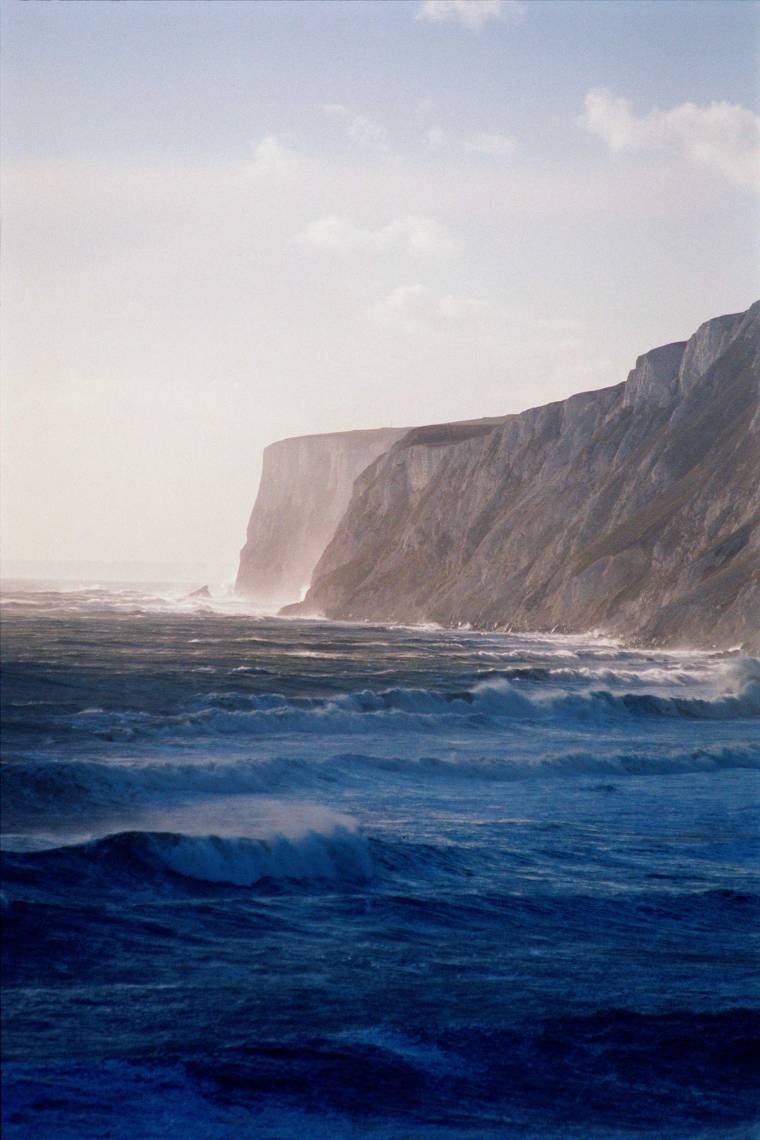
Freshwater Bay – a postcard showing the cliffs abutting Tennyson Down – the High Down that flanked the southern perimeter of Farringford. There is still today a Gustave Dore poetic wildness to this area…
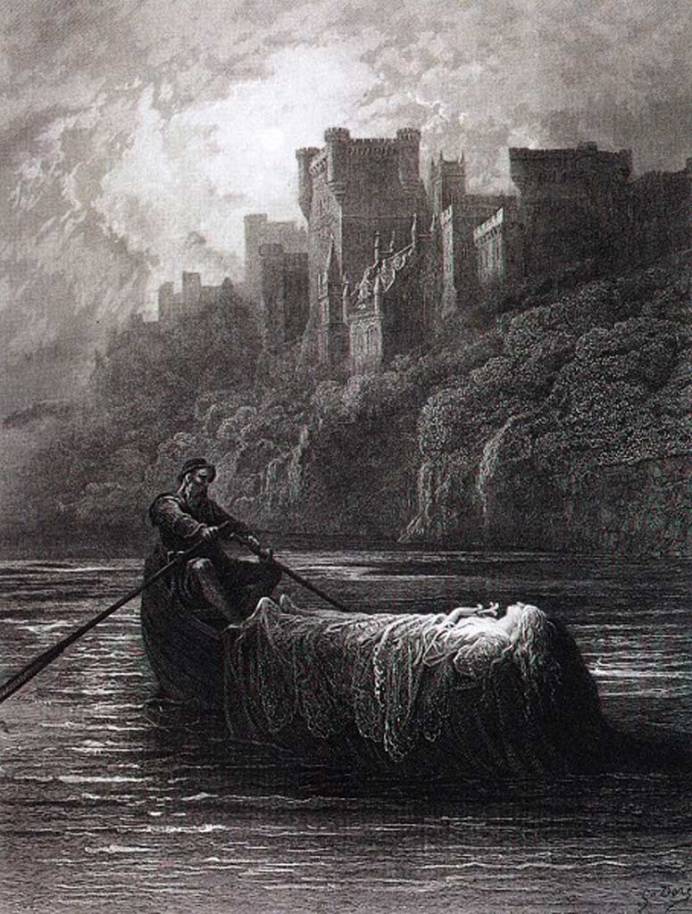
Gustave Dore: Elaine 1859 Dore’s envisioning of Elaine – The Lady of Shallott – arranged in her byre-boat floating down to Camelot. Dore was the master illustrator-engraver of this time. His dark, misty gothic, illustrations for Tennyson’s Idylls of the King are tremendously atmospheric. His work probably marks the pinnacle in the art of wood engraving. He died age 51 after a lifetime of prolific activity, illustrating dozens of books, hundreds of articles, and masterminding his spectacular London- A Spectacle (1872).
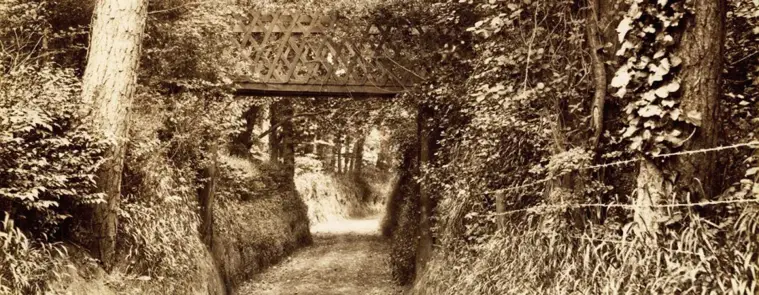
‘Tennyson’s Bridge’ constructed in the 1870s to give Tennyson private access to his ‘wilderness’ and to the High Down that would later bear his name. This one collapsed a couple of years ago, but was sensitively replaced in 2014 by Farringford’s owner Rebecca Fitzgerald.
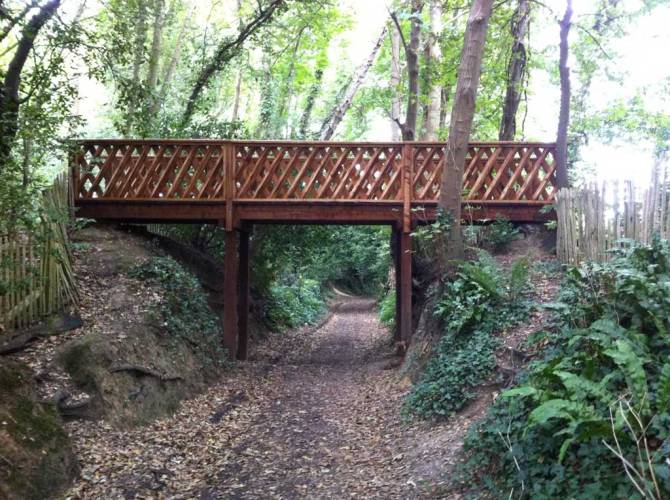
The Tennyson Bridge today, brilliantly restored by Rebecca Fitzgerald of present-day Farringford. The Wilderness and High Down to the left, Farringford Farm straight on, Farringford House to the right, and behind us the lane down to Freshwater Bay and Dimbola.
I include these images of Tennyson’s Farringford to give some idea of how suitable Farringford was as a setting and as visual inspiration for Idylls of the King (although The Lady of Shalott and several other Idylls poems were written much earlier). The area around Farringford, especially the southern perimeter, now marked by Green Lane (Tennyson’s Avenue as it is called below), is still delightfully anachronistic, redolent of William Morris intertwined undergrowth and Tennyson’s lyrical poetry.
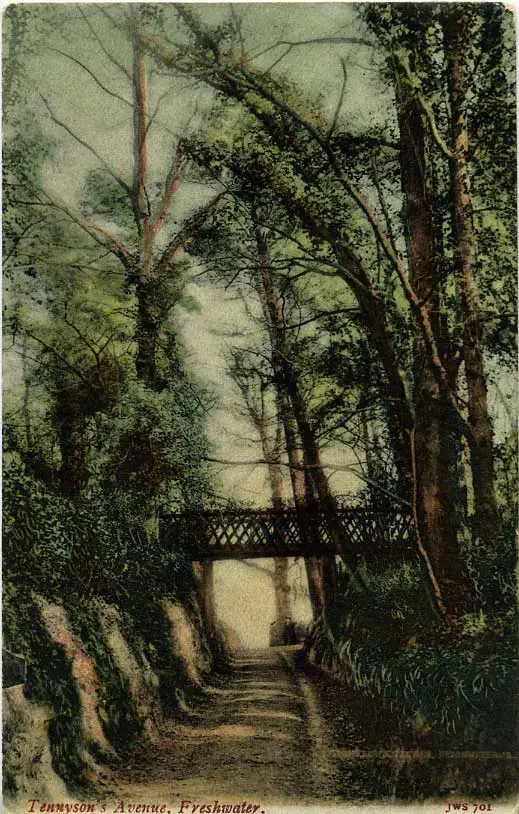
1930s postcard entitled ‘Tennyson’s Avenue’. To the left (the south side) is the area he called The Wilderness, where he had a small summer house made for contemplation and writing, the bridge is Tennyson’s gateway to the Wilderness and to the High Down beyond.
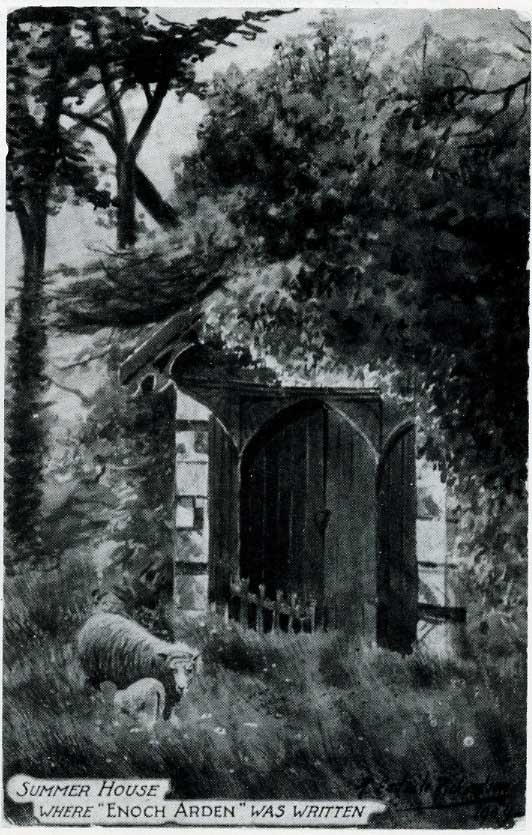
This 1920 image by ‘C. Esdail’ is of Tennyson’s summer house still then standing in the Wilderness. The wilderness is now a vast badger set, and is really an overgrown wilderness again.
In 1874 Julia was asked to contribute illustrations for another edition of Tennysons Idylls of the King.
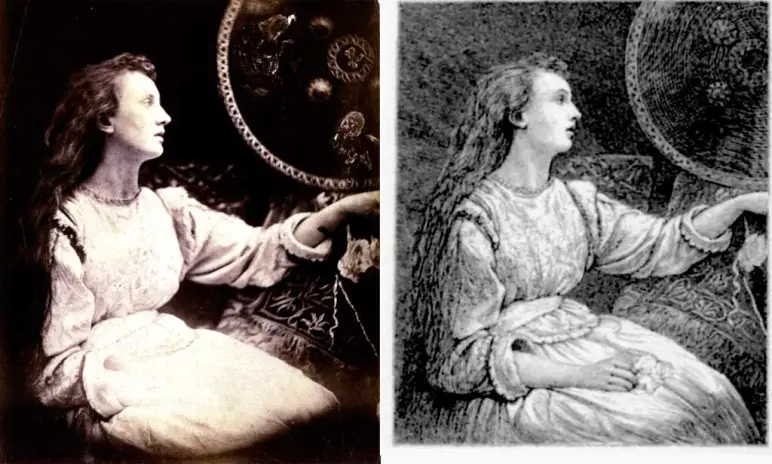
Julia Margaret Cameron: Elaine – The Lily Maid of Astolat 1874. Cameron is striving for the mystery with which the master illustrator-engraver Gustave Dore had endowed his drawings for Idylls of the King (1856). In contrast, this is how Julia’s work appeared in the frontispiece to the 1874 version. May Prinsep is the model for the photograph.
You can see why she was terribly disappointed with the published result. The engraver just had not been able to interpret Julia’s photograph, with its finely nuanced continuous tones into a black-and-white ‘ine’ medium like an engraving. So disappointed with the 1874 edition was she, that Julia, with Tennyson’s encouragement, decided to publish her own illustrated edition of The Idylls of the King, but this time to include ‘tipped-in’ (mounted photographic prints) photographs instead of relying on expensive and uncertain engravings.
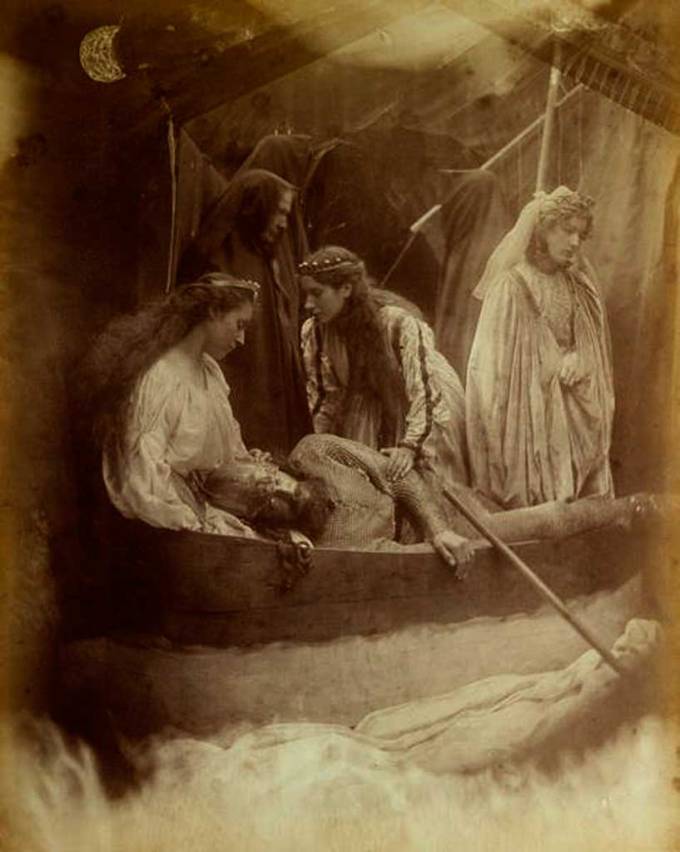
Julkia Margaret Cameron: The Passing of Arthur 1875. This ambitious image gives you some idea of the completeness of the vision that Julia wanted to portray. It is a complex image, with several costumed models, constructed sets and even a painted moon. This is quite a remarkable achievement in 1875 – approaching cinematographic mise-en-scene. Julia’s work on the Idylls is the earliest example of the use of photographs to illustrate a poem – a landmark in the evolution of mass media.
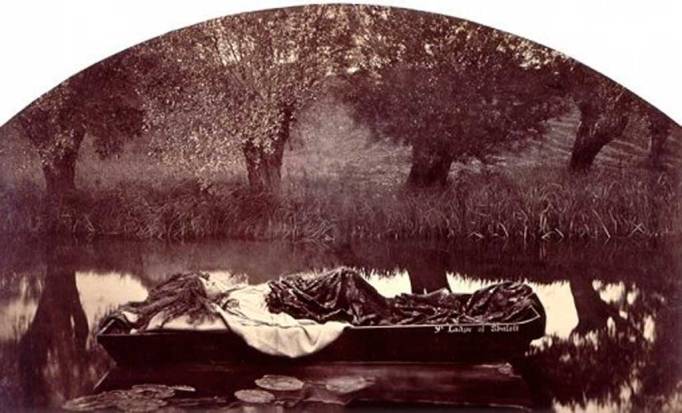
Henry Peach-Robinson: The Lady of Shalott 1867. Of course ten years before Julia’s Idylls, her pictorialist forebear Henry Peach Robinson had composited his own version of of Lady of Shalott, jointing two negatives together. But Peach ~Ropbinson’s image was not published as an illustration to the text of the poem.
I have to finish with a painting made two decades after Julia’s death, it is my favourite rendition of these lines:
His broad clear brow in sunlight glow’d;
On burnish’d hooves his war-horse trode;
From underneath his helmet flow’d
His coal-black curls as on he rode,
As he rode down to Camelot.
From the bank and from the river
He flash’d into the crystal mirror,
“Tirra lirra,” by the river
Sang Sir Lancelot.
She left the web, she left the loom,
She made three paces thro’ the room,
She saw the water-lily bloom,
She saw the helmet and the plume,
She look’d down to Camelot.
Out flew the web and floated wide;
The mirror crack’d from side to side;
“The curse is come upon me,” cried
The Lady of Shalott.
It is of course the painting by William Holman Hunt revisiting his 1850s drawing in his meticulous Pre-Raphaelite precision, shot-through with evocative magic of Tennyson’s verse.
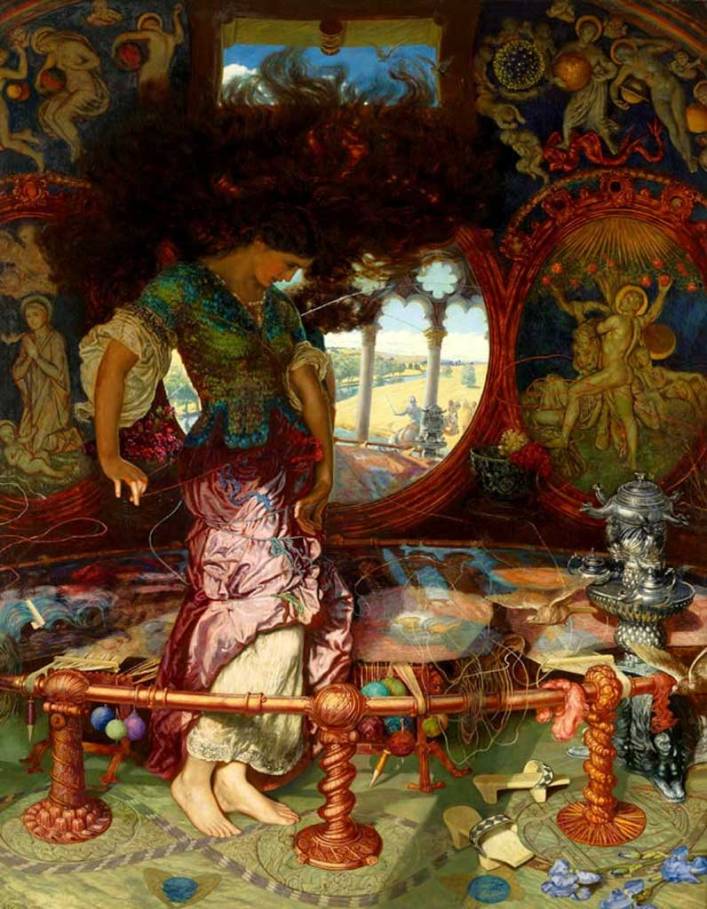
William Homan Hunt: The Lady of Shalott 1900. As Jeremy Maas points out in his Victorian Painters (1969), it is astonishing that Holman Hunt can create a perfect pre-Raphaelite painting some 50 years after the foundation of the Brotherhood. But here he has embellished the mediaeval with an orientalism – even Japanese sandals. The fire of Tennyson’s poetry is in this painting.
Reblogged this on Living Faeries and commented:
Forse il più romantico dei personaggi che accesero la fantasia dell’Inghilterra vittoriana, la Dama di Shalott, ritratta dalla più grande fotografa del XIX secolo, Julia Margaret Cameron.
Prossimamente Living Faeries parlerà della Dama di Shalott e delle connessioni tra il mondo arturiano e le fate.
Thankyou. Tennyson’s poem is in itself beautiful, and made more powerful by its fairy-tale-like form and expression (tirra lirra by the river, etc), which reinforces its strong archetypal appeal. Thanks for commenting.